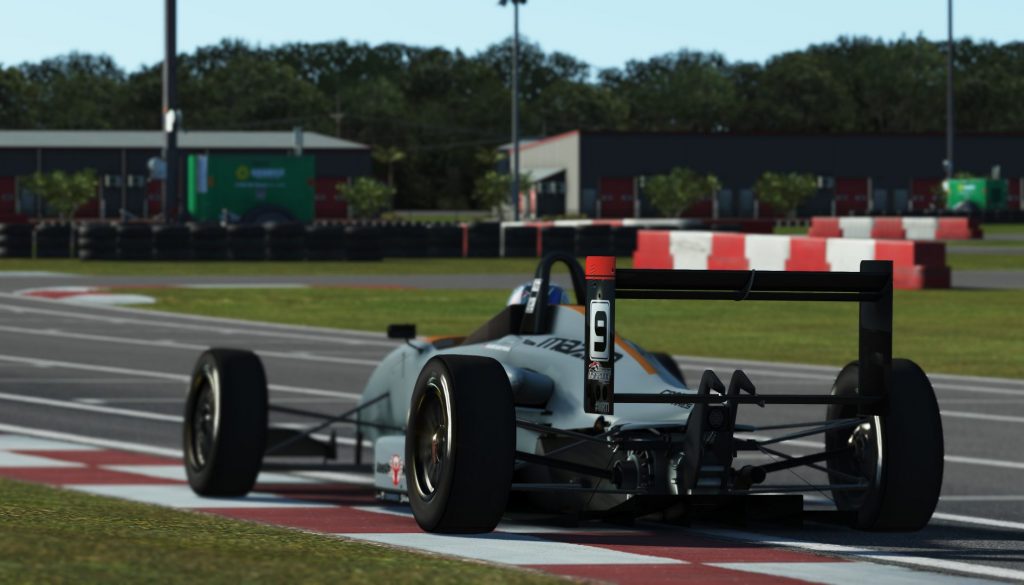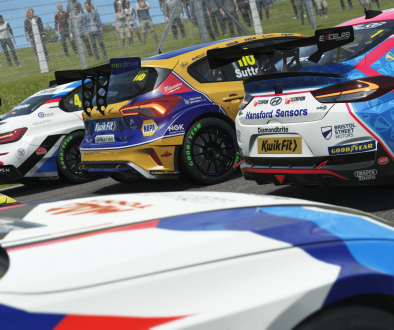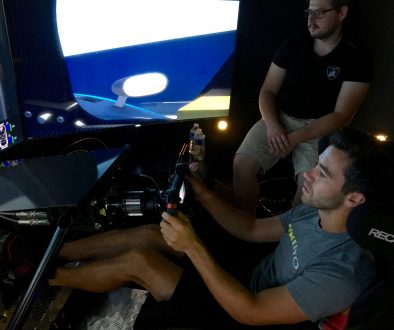For a long time, we’ve had an issue, whereby tyres would incorrectly overheat when running off-road. Simply put, this isn’t particularly realistic, and when you re-entered the track, you end up with hot squirmy tyres that can often send you into another spin due to excessive temperatures. Although similar in traits to tyre dirt pick-up, the effect in the way it operated, wasn’t particularly realistic, and we hope to eventually do tyre pick-up in a more realistic way. Anyway, without derailing myself too much, we have a solution for the problem of excessive heat generated by tyres in off-road conditions. In fact, this new tech allows us to control the temperatures due to a wet road surface too. If needed, it even allows the user to slightly tweak the sliding friction temperatures generated on dry asphalt, if your tyre is slightly off from the data you expect (something that was not possible before). In other words it’s the first time the user has a direct control over the amount of sliding energy that is transferred to the tyre as heat. Some of the more eagle eyed among you, might have noticed these parameters in the tyres within the TGM database, with the release of build 1110, will become active. We’ll also explain exactly what they do. To be 100% clear, these are all [Realtime] parameters for the .TGM file.
The TGM [Realtime] entries (and their current defaults) are as follows:
DryTerrainEffect=(0.0,1.0,1.0) // referred to as var0, var1, var2 below WetTerrainEffect=(0.0,1.0,1.0) GrassTerrainEffect=(0.0,1.0,1.0) DirtTerrainEffect=(0.0,1.0,1.0) GravelTerrainEffect=(0.0,1.0,1.0) RumbleTerrainEffect=(0.0,1.0,1.0) SpecialTerrainEffect=(0.0,1.0,1.0)
Each of the “TerrainEffect’s” refer to their corresponding .TDF ‘sound=’ variables. If a surface calls for a grass sound effect, we can safely assume it’s grass. If it’s “Dry” we assume it’s a normal hard driving surface (concrete or asphalt). The first value in each variable, is a blending variable for static and sliding friction coefficients. Given by:
new_static_coefficient = old_static_coefficient + ( var0 * ( old_sliding_coefficient - old_static_coefficient ) ) new_sliding_coefficient = old_static_coefficient + ( var1 * ( old_sliding_coefficient - old_static_coefficient ) )
This allows a bit of freedom to adjust the grip coefficients to make off-road slip curves slightly less peaky. The third variable, is the most important change, and allows us to specify the fraction of sliding power applied to the tyre as heat energy. On dry asphalt, this should generally be 1.0 or at least within 10% of that. Of course, sliding on loose dirt is actually dissipating a lot of the energy by rubbing dirt particles against other dirt particles, which may never come in direct contact with the tyre. So only a fraction of the sliding power goes into the tyre as heat. I’ve found that to get the best results, we have to sometimes go as low as 0.05 of the heat energy.
While the defaults are above, the values we found through testing, suggest to use values around:
DryTerrainEffect=(0,1,1) WetTerrainEffect=(0,1,0.5) GrassTerrainEffect=(0.5,0.9,0.06) DirtTerrainEffect=(0.8,0.9,0.08) GravelTerrainEffect=(0.8,0.9,0.08) RumbleTerrainEffect=(0,1,1) SpecialTerrainEffect=(0,1,1)
To quote the programmer on the purpose of the new parameters:
Generally, whatever type of terrain you are running over (according to the TDF Sound variable), it uses that line. One exception is when Sound=DRY and we detect standing water according to RealRoad. Based on the amount of standing water, it blends between the DryTerrainEffect and WetTerrainEffect.What is the point of this? Well, two-fold.
One is that you could do something like average them out to create a less peaky slip curve. If the first two variables are both 0.5, it essentially makes both coefficients the same value, which would be the average of the old coefficients… I’m not sure if I’d go that extreme (it might even make the model a little funky trying to switch between static and sliding bristles).
The second point here is that perhaps you want to make some minor adjustments to the grip of some off-road terrains with these TGM variables. If you bias both of those numbers towards using the (presumably lower) sliding coefficient, let’s say numbers like 0.6 and 0.9 [respectively], then you’re going to reduce the grip on that type of terrain. Lower numbers like 0.0 and 0.2 would increase the grip, because it’s biasing it towards the higher static coefficient.
The third variable simply tells us how much of the sliding power should be applied to tire heat. Originally (and now by default), all of the sliding heat energy is applied.
Also new is:
InternalGasMolarMass=0.02897
Which, although doesn’t have anything to do with the previous feature set, allows more adjustability in the inflation gas used, this can influence pressure build-up of the tyres.
In the last blog to cover the tyre model, we promised to include some new features to help analyse tyres. These new features allow realroad adjustments in tTool, which allows you to play with terrain surfaces and measure the results. tTool was also difficult to correlate with on track experiences because the track was always set to standard properties, which meant a standard surface roughness and a green (devoid of rubber surface).
We will cover those features in the next blog.




